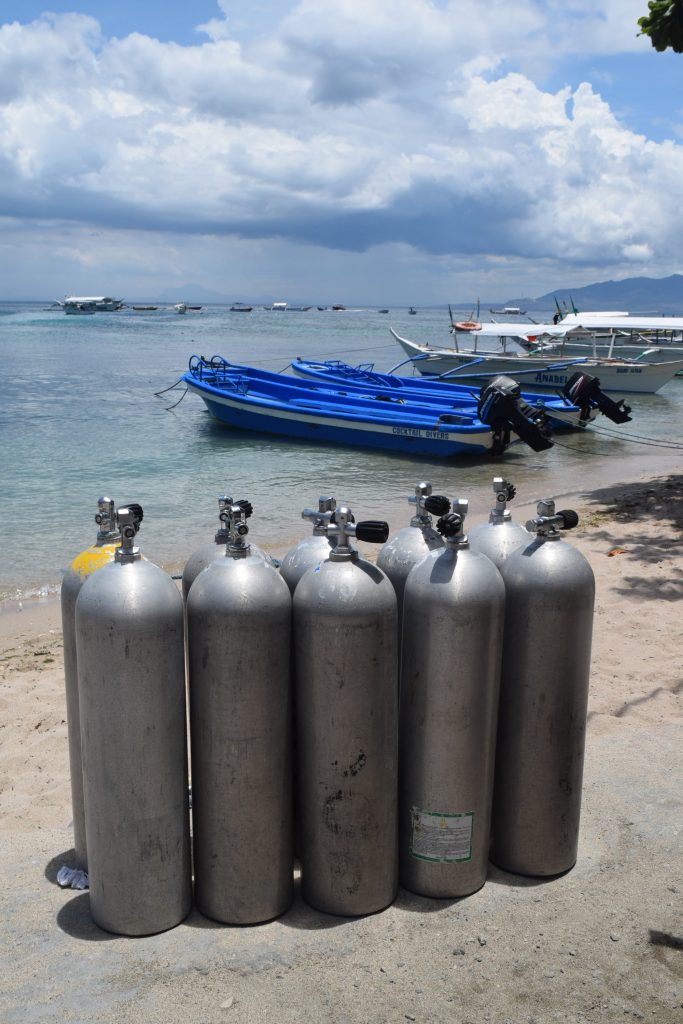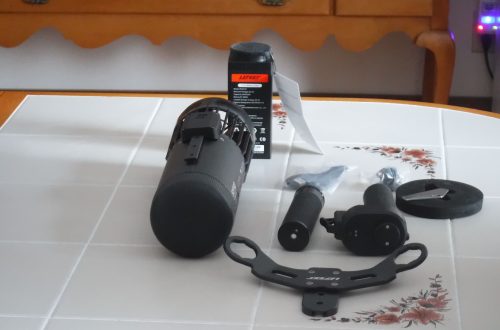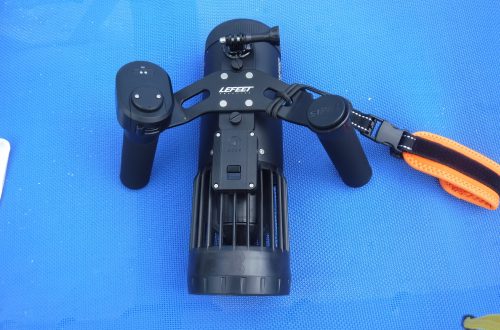
Your First Scuba Dive From a Boat
Your first scuba dive from a boat can be a very challenging dive. Many times it happens while still learning to become a scuba diver. In this case, it rapidly becomes something you are accustomed to. However, if you learned to dive at a location that has great shore diving or are diving at a quarry or small lake, you may have many dives before having your first scuba dive from a boat.

Your first scuba dive from a boat can be a challenge for a new diver. You will need to follow safety protocols. There are different methods of entering and exiting the boat. You also need to be aware of the other divers.
Scuba Dive From A Boat Etiquette
Boaters and divers, who dive from boats, generally follow some simple rules designed to make the experience safer and more pleasurable. Here are a few items to keep in mind while aboard.
- Double check you have all the gear you need, and that it is in good shape.
- Ask Permission to come aboard. You would not just walk into someone’s house, you should have the same curiosity for a boat. Even an owner of a boat who is not also the captain will ask permission to come aboard. The captain is responsible for the boat, everything onboard as well as any and all passengers. Another reason is that the crew may not be ready for the passengers. Guest roaming around may be in the way of the crew preparing the boat for departure and the guest.
- Stay out of the way. Prior to getting aboard or as you do, you should be told where to store your gear and the pre-departure process. In some cases, you will assemble your gear before boarding. Some dive boats will assign you space as you board and direct you to set up your gear for the first dive right away. In rare cases, you will be told to wait to assemble your gear when you arrive at the dive site.
- Keep all of your gear, within the space assigned to you. Weights should not be stowed on benches or other spaces where they may fall. Weights are magical. Loose weights seem to be attracted to the most expensive item near it and destroy it.
- Listen carefully to the boat briefing and the boat safety briefing. This will give an overview of the boat, off-limit locations, safety equipment, roll call procedures, camera rinse tanks if available, and entering/ exiting the water procedures.
For more information visit a post I wrote for deeperblue
Scuba Dive From A Boat Methods For Entering The Water
A scuba dive from a boat will involve leaving the boat and getting into the water. Yes, I see the eye rolls. Still, there are a number of methods that you can accomplish that. Which method is best, will be determined by a number of factors. The most important is often the type of boat. Here is a brief look at the most common methods.
Giant Stride:
The giant stride is used from stable platforms into water that has some depth. A larger boat where it is comfortable to walk aboard with a swim platform or low gunwale is an example. You can also use the giant stride for entry from a pier and swimming pools. You may fall a few feet before reaching the water. I have done giant stride entries from over 15 feet above the water.
- Step 1: Fully assemble your dive gear and partially inflate BCD. (fins may be donned after arriving at the entry point, depending on the boat)
- Step 2: Approach the entry point, and insure a steady position with fins over the edge.
- Step 3: Scan the area below.
- Step 4: Place the regulator in your mouth, take a couple of breaths, and observe the pressure gauge.
- Step 5: Hold the console in your left hand (place it over the waist).
- Step 6: If the crew is controlling the release, indicate you are ready. Hold the regulator and mask with your right hand.
- Step 7: Look forward (not down).
- Step 8: Step out and push off (do not jump)
- Step 9: Establish positive buoyancy and turn to face the crew.
- Step 10: Signal okay.
- Step 11: Move away from the boat to the designated point to meet with your dive buddy, and check your equipment placement.
Back-Roll Entry:
The back-roll entry is the most common method used for entering from a smaller boat or another unstable platform. This is the common method to enter from a RIB and other small boats. As the name implies, you simply sit on the side of the boat and roll backward into the water. This is only possible where the distance from where you start the roll to the water is close, a couple of feet at the most. Unlike the giant stride, where only one or two divers are ready to enter the water at a time, it is possible for all divers to be ready at the same time. Generally, a crew member will release a diver to enter the water, either one at a time or a pair from opposite sides of the boat. It is important that you are prepared to enter as soon as the crew releases you.
- Step 1:Fully geared with mask and fins in place and facing inwards, sit on the edge of the boat. Slide back till your tank is at or slightly past the outer edge of the gunwale/ pontoon. Maintain your weight forward.
- Step 2:Inflate your BCD about half full BCD
- Step 3:Secure your gauges and anything that could catch on the boat.
- Step 4: Test your regulator and check your pressure gauge. Use the palm of your right hand to secure your reg and to keep your mask in place. Place your left hand over your mask strap at the back of your head. This should help keep your mask from slipping and also from hitting your head on the tank valve.
- Step 5: Make sure that the water behind you is clear. Indicate you are ready and wait to be released by the crew.
- Step 6: Keep your feet and knees together, tuck your chin into your chest, and lean backward Lean back gently and let gravity pull you into the water. If you force yourself back, you may hit hard and even flip.
- Step 7:When you return to the surface, add air to your bc if needed, face the boat, and give the Ok signal.
- Step 8: Move away from the boat to the designated point to meet with your dive buddy, and check your equipment placement.
Scuba Dive From A Boat Controlled Seated Entry
You are more likely to use the controlled seated entry at a swimming pool than from a dive boat, however, it does happen. In my almost 1,000 boat dives, I have used this about 5 times. In shallow water, it is the safest method to enter the water. Explaining it is more difficult than doing it.
- Step 1: Position your gear where you can reach it while seated or have another person assist you.
- Step 2: Sit on the edge with your legs bent so the knees are against the side.
- Step 3: Don your fins and then your scuba gear. Secure all the hoses. Don your mask and regulator. Test the regulator and check the gauges. Add some air to your BCD.
- Step 4: Place your right hand along your thigh, with the palm near the edge and the fingers facing away from the water. (you can do this maneuver in either direction.)
- Step 5: Bring your left hand over your body and place it on the deck, bring your body around supporting your weight on both hands/arms.
- Step 6: Lower your body into the water. Add air to your BCD if needed.
No Gear Entry.
While not common, it is a task you should be able to do. You may find a situation where putting your gear on while on the boat is difficult because it is crowded. However, if you try scuba diving from a kayak this is a great way to do it. A sit-on-top kayak can get you out to a dive site that could be a challenge for a shore dive. Assemble your gear, Lash it to the kayak, and paddle on out. When you reach the area you want to dive, anchor your kayak. Unleash
your gear and inflate your BCD. Slip on your snorkeling gear, and lower your BCD into the water. Follow it, and don your gear. That’s it.
Exit The Water Back To The Boat
Most boats except RIBS will have a ladder to get back onboard. Your dive briefing will inform you of the procedures that will be used. It is important to remember that you need to stay away from the ladder while there is a diver on it. If there is a current, most dive boats will have a line trailing the boat for you to hold on to until it is your turn to board.




